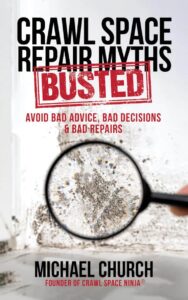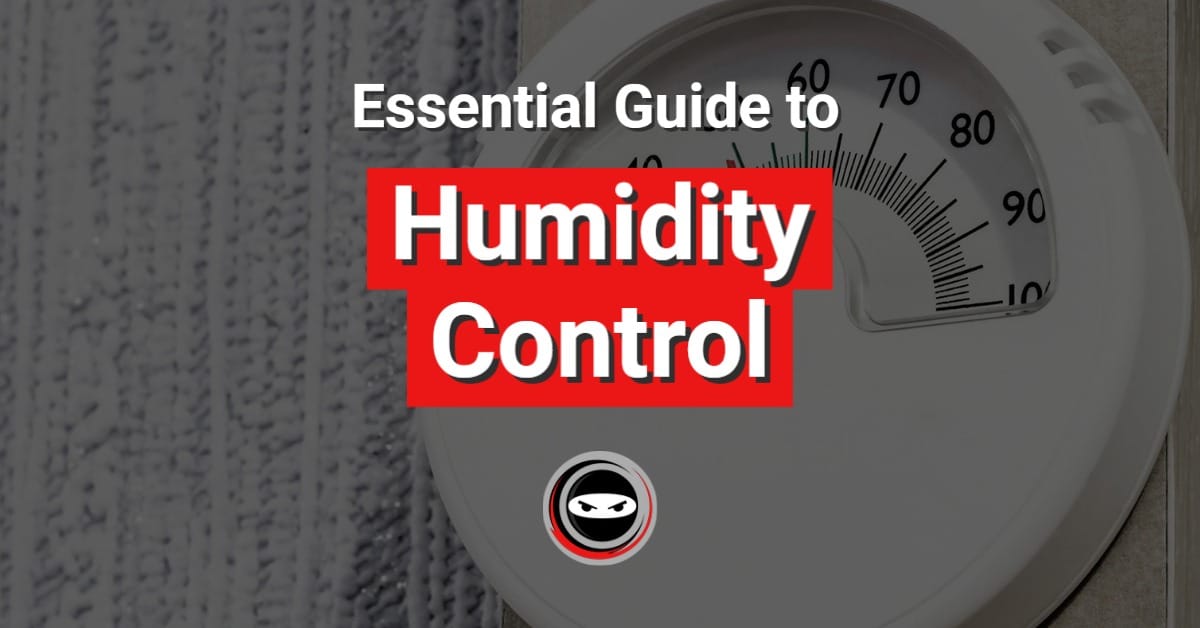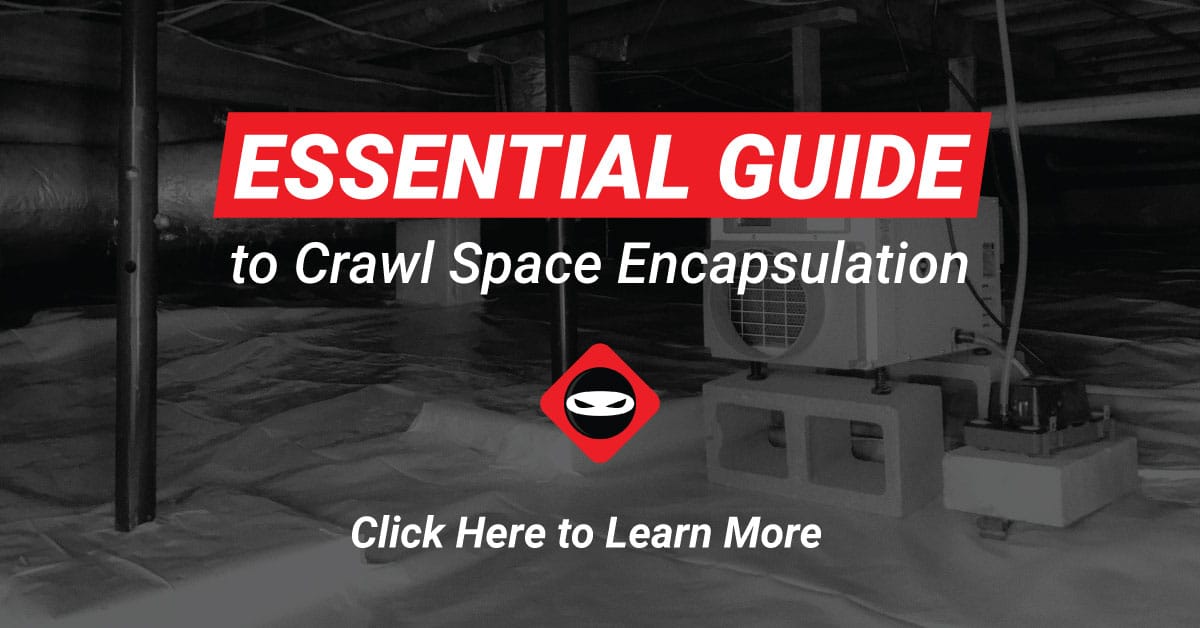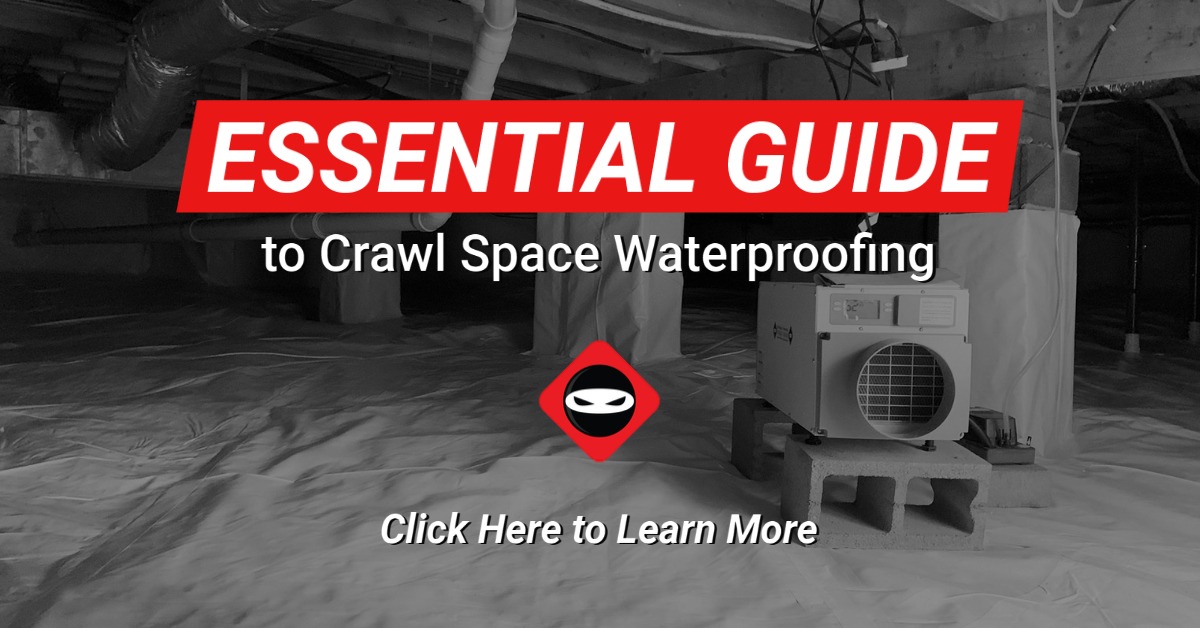We got a great question, “Will Radon Mitigation System Lower Humidity?”, on our Ask A Ninja page from Douglas in Carson City, Nevada.
I am having my home mitigated for radon. The level is a 3.9, under the 4.0 recommendation for mitigation, however I am doing it anyway.
There will be an ASD (active soil depressurization) system installed, followed by a vapor barrier. I read an EPA study that stated ASD was by happenstance greater overall at dehumidifying a crawl space because it was pulling the damp soil from underneath the vapor barrier, which left little humidity to permeate the vapor barrier.
If ASD is able to do this, is a dehumidifier needed? If in fact this ASD system is more efficient at dehumidifying then for the 2k cost of installing and materials, could it be a better fix or an added fix? My house is in Carson city NV, I am not in a flood zone and the humidity is low compared to the rest of the country. My certified radon contractor is open minded and I’m glad I found him, but it doesn’t seem that radon contractors coordinate with experts like yourself when installing vapor barrier.
I asked him if he was planned on sealing the vents, he said no. So we had a discussion and he said he would. Also he was only going up the exterior wall about a foot, but would go higher up the wall with vapor barrier upon my request. Let me know your thoughts and if I indeed need a dehumidifier anyway, on top of the ASD. THANKS!
Michael Church’s Crawl Space Repair Myths-Busted book was written to help you Avoid Bad Advice, Bad Decisions, & Bad Repairs.
“This book is the Cadillac for crawl space information and Michael Church is your experienced driver. What can I say? It’s just an amazing read.” 5.0 out of 5 stars The real deal.
Is Dehumidifier Needed with Radon Mitigation
Douglas, I want to applaud you for installing an Active Soil Depressurization system in your crawl space even though your radon levels are below the 4.0 picocuries per liter, or pCi/L. We feel radon levels should be as low as possible in every home.
I created a link to an EPA study above and hopefully it is the same study you read and referred to in your question. I do want to be clear before we get into the subject matter that dehumidifiers do not remove radon but according to the EPA study, an ASD can control humidity.
I cannot argue with the findings on the EPA as we have seen radon mitigation levels control humidity in both basements and crawl spaces. The problem lies in the improper installation of the system, it degrading over time and the relative humidity found outside. Homeowners like yourself can trust but verify what contractors tell them. I have no doubt your contractor is telling you the truth, but every home and region is different.
For example, you mentioned the relative humidity in Carson City, NV is low compared to other areas. This may be true but according to USA.com the average relative humidity in Carson City is 78.98%. This is very high when it comes to damage that can occur via mold and fungus growth from high humidity. My point is an improperly installed or degraded ASD can eventually pull in that 78.98% humidity. I recommend a humidity reader after the ASD is installed to verify the humidity levels on a constant basis if you do not install a dehumidifier.
Should the Vapor Barrier Cover Most of the Wall
I think you should have your contractor take the vapor barrier all the way up the wall. If your state requires a termite gap, be sure to abide by local codes. The vapor barrier up the wall will help minimize moisture from rain and humidity. This should allow the radon fan to work even better at keeping the humidity low.
Sealing the vents may have an effect on the radon fan but if the ASD is installed and sealed correctly there will be very little air movement above the vapor barrier. When the vapor barrier is installed it is sealed with polyurethane caulk to prevent air movement except under the vapor barrier. You may decide to add a foundation vent fan blowing out in order to make sure the air above the vapor barrier is not entering your home.
Best Humidity Level for Crawl Space
https://crawlspaceninja.com/blog/best-humidity-level-for-crawl-space/
Can a Radon Mitigation System Raise Humidity
While researching information about your question, I came across an inspector that concluded the radon fan was actually raising the humidity levels in a home. This is why I say all homes are different and humidity levels should be checked to ensure what your ASD is doing. I found the information on the Green Building Advisor Community and Q&A. He said:
After documenting the temp and RH in both the house and crawl space, I have discovered the Radon Fan is somehow bringing humidity (outdoor air) into the building envelope.
Here is a link: https://www.greenbuildingadvisor.com/question/radon-fan-causing-increased-humidity
In conclusion, I would wait on installing the dehumidifier until you measure the humidity after the ASD is installed. Great question and hope that helps.
What Next?
Do you need help with mold removal, crawl space encapsulation, crawl space insulation, vapor barrier, waterproofing, foundation repair, or controlling humidity in your crawl space and you live in Georgia, Delaware, North Carolina, South Carolina, Tennessee, Ohio, or Kentucky? If so, please contact us to schedule your assessment. Also, let us know in the comments below if you have an idea for a new blog topic.
Perhaps you’d like to tackle your own crawl space repair. Visit our DIY Store.
Contact us if you need help fixing your crawl space or yard drainage by clicking here.
Learn about Crawl Space Ninja Franchise opportunities.






8 thoughts on “Will Radon Mitigation System Lower Humidity”
Your explanation is greatly appreciated .
Just would like some clarification on a few things if you don’t mind.
1) if the current foundation wall insulation is adhered to the top of the concrete foundation where should the vapor barrier be secured to?should I cut down the foam board 6 inches all around?
2) how many vent fans (blowing out) do you recommend.. the crawlspace is 1600 sq ft x 4ft height.
3) based on the cubic sq ft of my crawlspace I was going to order 2k sq ft of your vapor barrier 30x55x 4 ft high.
4) although no visible mold, I am highly sensitive (retired cop /first responder 9/11) I am going to soda blast DIY before the radon mitigation ,what size air scrubber do I need to rent or other apparatus to ensure any spores are being exfiltrated . And I’m guessing Anabec cleaning solution or x70 or both afterward?
Thank you in advance for any help..if I wasn’t so sensitive to mold I would be discussing franchising..there’s no one in the reno Tahoe area that comes close to your model of expertise.
We install vapor barrier over insulation so exposing 6 inches of wall to do that would be good or can you apply the vapor barrier direct to foamboard using Christmas tree fastener. 1 fan should be enough if crawl space is open. If compartmentalized, 1 per section would be best. My math may be wrong but I am showing 2,330 square feet of wall and floor based on your numbers. not including pillars. You will have waste so 3000 to 4000 square feet may be better but you can start with 2000 and see how it goes. 500 to 1000 cfm scrubber would be best but you may want to direct air scrubber question to rental place. Cleaner is to address mold X70 to protect from returning. Please follow directions carefully on both. I hope this helps and thank you.
Forget to mention the relative humidity average.
No matter how many times I read the different types of humidity vs dew point etc. It leaves me no more knowledgeable on the subject.
The most humid average ( between 50% -80% ) months in Carson City Nevada are Nov, Dec,Jan, Feb but the dew point is low which makes it feel dry..I’m still perplexed.
My question is if the relative humidity is highest when it’s cold and super low (single digits) when its hot..how does this affect the crawlspace environment in relation to exfiltration fans.
It should not matter with fans. If you are running heat in home when humidity is high in winter that will assist in drying. I don’t know your climate but I think fans will be ok.
Hopefully this is my last question and will assist in my proper ordering of vapor barrier from you.
The house was built in 1987 and there is foam board around the perimeter of the crawl space walls (no insulation in between the floor joists) smart builder.
The foam board on the walls has the silver layer on it.
Question 1 : if I put the vapor barrier over that silver foam board, wouldn’t that create potential for condensation?
If so how should I marry the vapor barrier with the foam board, can I overlap a small amount from the bottom up about 6 inches or do I have to stop it at the base of the foam board and fasten the vapor barrier directly to the concrete?
Question 2: I found a soda blaster Sierra soda blasting. To make sure containment and air scrubber is utilized properly, how long should the air scrubber run after the blasting is finished. Crawlspace is 1600 sq ft/ 4 ft high, air exchanger is about 5 exchanges per hour I believe.
Thanks, look forward to your answer so I can order the vapor barrier from you guys.
few hours of scrubber should be good. the silver stuff you describe I believe has a moisture barrier on it so you can attach the vapor barrier to it and tape. That is what most companies that use it do. I am not real familiar with how well tape sticks to it since we do not use that type of insulation. Yes, There is a chance of condensation between two medias that don’t allow water to move.
I swore that was going to be my last question..
Sierra Soda, the soda blast company said they are going to use a strong negative air machine not an air scrubber, vented to the outside of the house and will set up a sealed containment area (master bedroom) from the crawlspace trap door to the window .
Contractor states that he wants to leave the foundation vents open to bring in outside air to assist in air movement into the negative air machine in the crawlspace.
Question 1: does this method sound correct? If the foundation vents are open during soda blasting and negative air machine engagement, won’t that bring in potential unnecessary outside air?
He also said once everything was visibly clear from the space he was pulling the machine and job was done.
Question 2: should I rent an air scrubber and leave it on in the crawlspace (with out venting) for 24 hours after he leaves?
Or is this over kill?
This entire job is mostly preventative because of my sensitivity level (911 first responder) and piece of mind.
Hope you have time to answer my questions. I believe I have it almost all figured out.
We use scrubbers in the home in the event the soda comes in and with the force it has, it usually does. We use negative air machines in the crawl to push soda out and try to keep out of home.